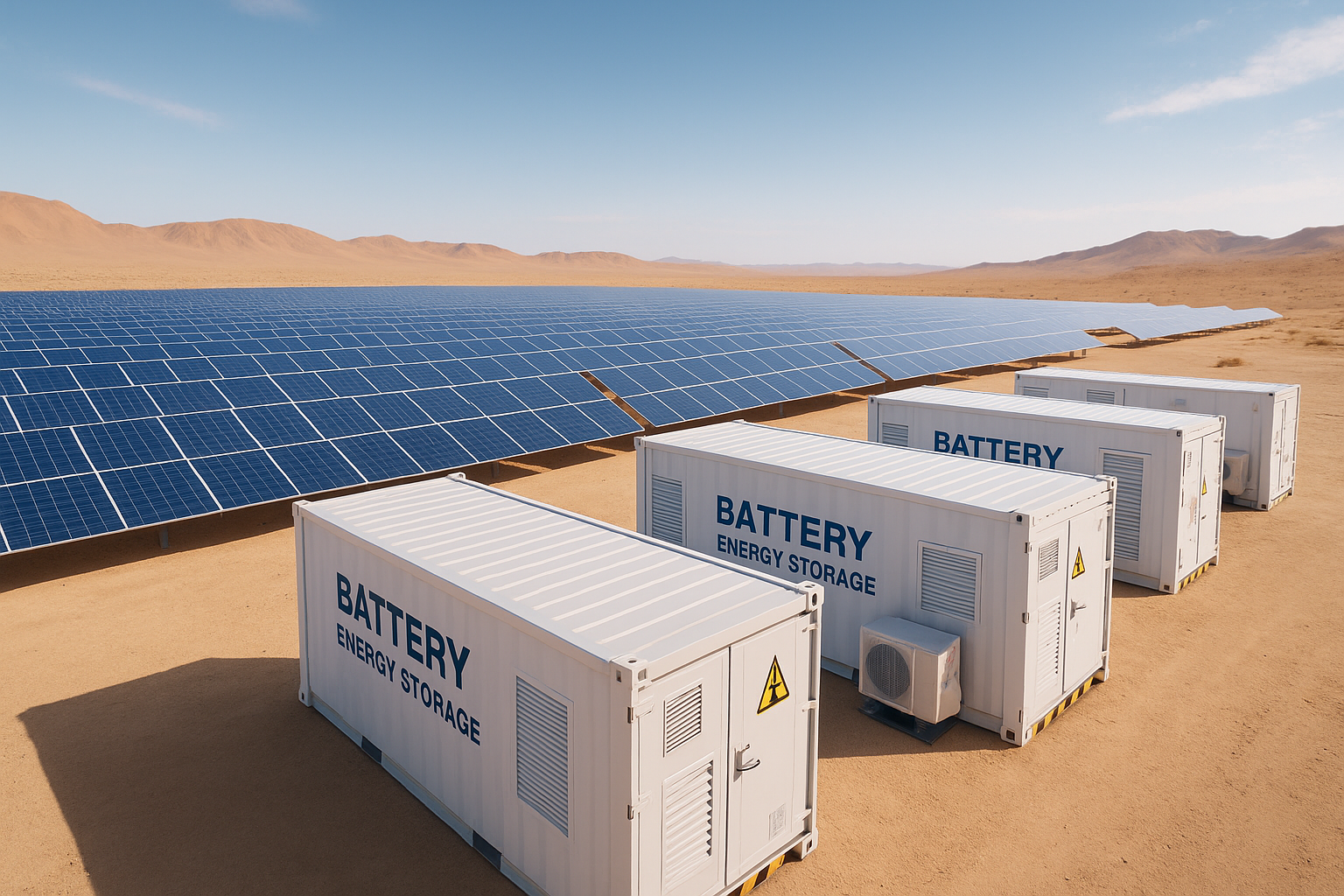Introduction
Chile stands at the forefront of Latin America’s clean energy revolution, rapidly expanding its solar and battery storage capacity to meet growing energy demands and reduce dependence on fossil fuels. The country’s unique geography, with its sun-drenched Atacama Desert, makes it an ideal location for large-scale solar developments. In recent years, Chile has witnessed a surge in hybrid projects that combine photovoltaic (PV) solar generation with advanced battery energy storage systems (BESS), a trend exemplified by the newly proposed 391 MW solar PV and 450 MW/2.1 GWh battery storage project.

The Sol de Algarrobal Project: A New Benchmark
One of the most ambitious undertakings is the Sol de Algarrobal project, which is set to become a landmark in Chile’s renewable landscape. With a planned capacity of 391 MW for solar PV and an integrated 450 MW/2.1 GWh battery storage system, this project exemplifies the next generation of hybrid renewable energy plants. The investment, estimated at $585 million, will see the installation of over 583,200 bifacial photovoltaic modules, which are designed to maximize energy yield by capturing sunlight from both sides of the panel.
Key Features
- Solar PV Capacity: 391 MW, utilizing high-efficiency bifacial panels.
- Battery Storage: 450 MW of power with a total energy storage capacity of 2.1 GWh.
- Grid Impact: The hybrid system will deliver stable, dispatchable renewable energy, mitigating the intermittency challenges of solar generation.
- Environmental Benefits: Significant reduction in CO₂ emissions by displacing fossil fuel-based power during peak demand and nighttime hours.
Why Hybrid Solar and Storage Projects Matter
Chile’s energy grid faces unique challenges due to its geography and the variability of solar generation. During peak daylight hours, solar plants often produce more electricity than the grid can absorb, leading to curtailment and wasted renewable energy. By integrating large-scale battery storage, projects like Sol de Algarrobal can store excess solar energy for release during the evening and night, when demand remains high but solar production drops.
Advantages:
- Grid Stability: Batteries provide fast-responding power to stabilize the grid and help balance supply and demand.
- Curtailment Reduction: Stored solar energy can be dispatched when it is most needed, reducing wasted generation.
- Decarbonization: Hybrid projects accelerate the replacement of fossil fuels, supporting Chile’s national decarbonization goals.
The Broader Landscape: Chile’s Energy Transition
The Sol de Algarrobal project is part of a broader trend in Chile, where multiple large-scale solar-plus-storage projects are being developed:
Atlas Renewable Energy’s BESS del Desierto: A 200 MW/800 MWh standalone battery project, the first of its kind in Latin America, designed to reduce renewable curtailment and support public transport electrification.
ENGIE’s BESS Coya: With 139 MW/638 MWh capacity, this facility stores energy from a 180 MW solar park, supplying green power to about 100,000 homes and avoiding over 65,000 tons of CO₂ emissions annually.
Eurus Energy’s Radal Solar: A proposed 280 MW solar farm with a 1,101 MWh battery system, demonstrating the scale and ambition of current developments.
These projects are underpinned by supportive government policies, including a $2 billion tender for energy storage systems in northern Chile, and a legislative framework aimed at accelerating the energy transition.
Economic and Social Impact
The expansion of solar and battery storage projects brings substantial economic and social benefits:
- Job Creation: Construction and operation of these large-scale plants generate hundreds of jobs, many of them local.
- Community Engagement: Developers are increasingly working with local communities to ensure projects deliver shared value, such as infrastructure improvements and training programs.
- Innovation: The adoption of bifacial panels, advanced inverters, and digital monitoring systems reflects Chile’s commitment to technological leadership in renewables.
Conclusion
Chile’s embrace of large-scale solar and battery storage projects, such as the 391 MW solar PV and 450 MW/2.1 GWh storage proposal, marks a pivotal shift in the nation’s energy strategy. These hybrid plants are not only transforming the grid but also setting new standards for sustainable development, energy security, and climate action across Latin America. As these projects come online, Chile is poised to become a global model for integrating renewables and storage at scale, powering its future with clean, reliable, and flexible energy.

